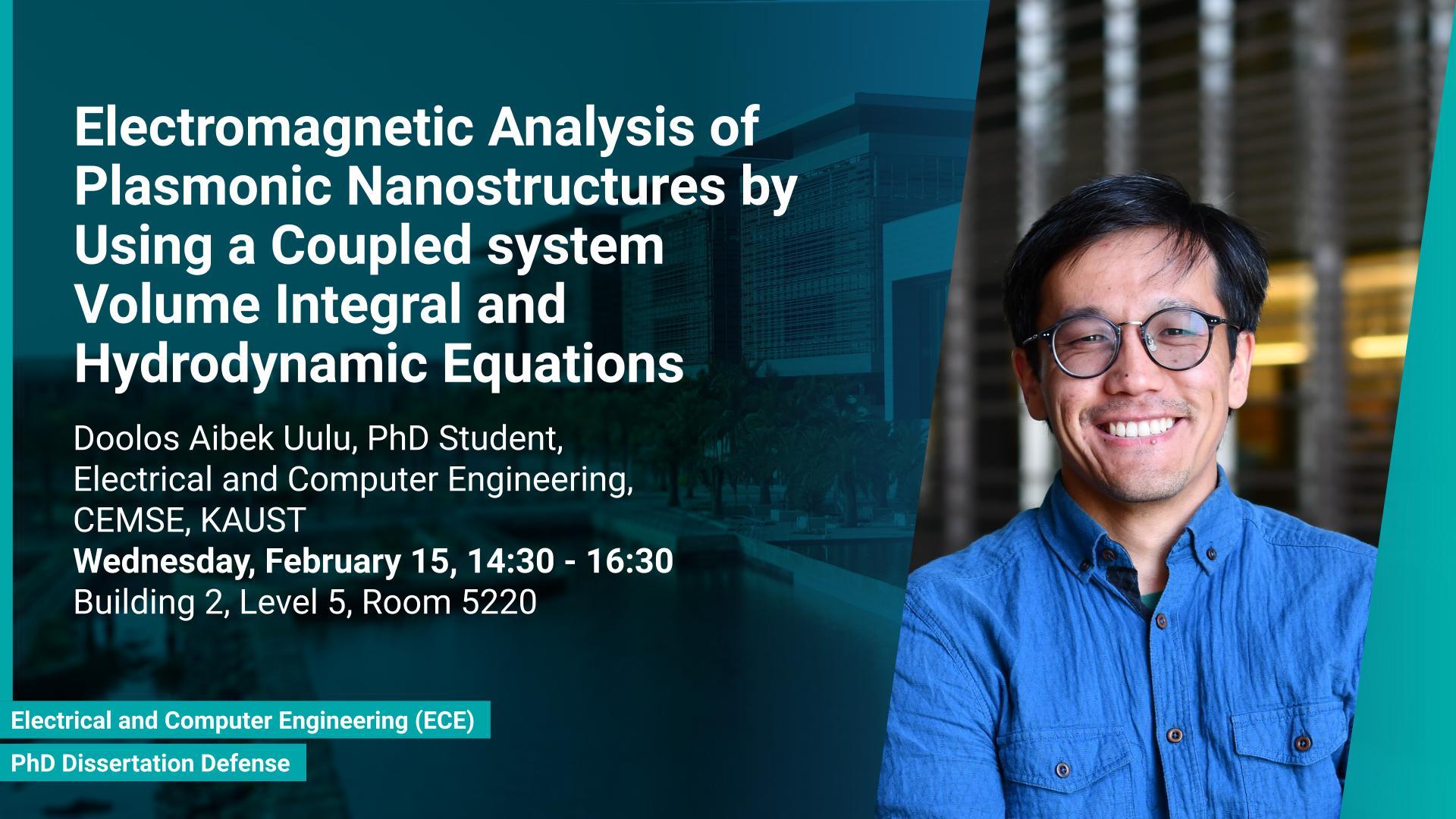Event Start
Event End
Location
Abstract
In this dissertation, three different coupled systems of volume integral and hydrodynamic equations are formulated to analyze electromagnetic scattering from composite plasmonic structures consisting of dielectrics, metals, or semiconductors.
First coupled system of volume integral and hydrodynamic equations is formulated to describe the electromagnetic interactions on nanostructures consisting of metallic and dielectric parts. The hydrodynamic equation is enforced in metallic parts while the volume integral equation is enforced in both metallic and dielectric parts. This coupled system of equations has two unknowns, electric flux, and hydrodynamic polarization current, and they are expanded using full and half Schaubert-Wilton-Glisson (SWG) basis functions respectively. These basis functions are defined on a mesh of tetrahedrons discretizing the nanostructures. The continuity and the boundary conditions of the hydrodynamic polarization current are ensured via the careful use of half SWG basis functions. Inserting the basis function expansions into the coupled system of equations, and applying Galerkin testing yield a matrix system. An efficient two-level iterative scheme is developed to solve this matrix system for the unknown expansion coefficients.
The second method is built upon the first one described above and is formulated to analyze electromagnetic scattering from nanostructures consisting of two different metallic parts. In this formulation, the free electron density velocity is used instead of the hydrodynamic polarization current since the latter is discontinuous while the former is continuous at metal-metal interfaces. Just like the first method, the scatterer is discretized using tetrahedrons but this time both electric flux and free electron velocity are expanded using full SWG basis functions each of which is defined on a pair of tetrahedrons. The matrix system resulting from Galerkin testing is solved using the two-level iterative scheme developed earlier.
To model semiconductor plasmon structures the conventional single-fluid hydrodynamic equation is not enough since semiconductors support two charge carriers. Therefore, the third method developed in this dissertation uses a twofluid hydrodynamic equation to take into account electrons and holes as charge carriers. Adopting this modification, a coupled system of volume integral and twofluid hydrodynamic equations is formulated and solved to analyze electromagnetic scattering from semiconductor plasmon structures. The two-fluid hydrodynamic equation relates the free electron and the hole polarization currents to the electric flux. Just like the first method, the electric flux and these polarization currents are expanded using full and half SWG basis functions, respectively, and applying Galerkin testing yields a matrix system that is solved using the two-level iterative scheme.
Numerical experiments are carried out to demonstrate the accuracy, the efficiency, and the applicability of the proposed methods.
Brief Biography
Doolos Aibek Uulu received his B.S. degree in Physics from the Middle East Technical University (METU), Ankara, Turkey in 2015; and his M.S. degree in Material Science and Nanotechnology from the Bilkent University, Ankara, Turkey in 2017. In February 2017, he joined King Abdullah University of Science and Technology (KAUST), Thuwal, Saudi Arabia, as a Ph.D. student in the Electrical and Computer Engineering Program. During his Ph.D. his research focuses on computational electromagnetics to model plasmonic structures by combining volume integral equation and hydrodynamic equation.

